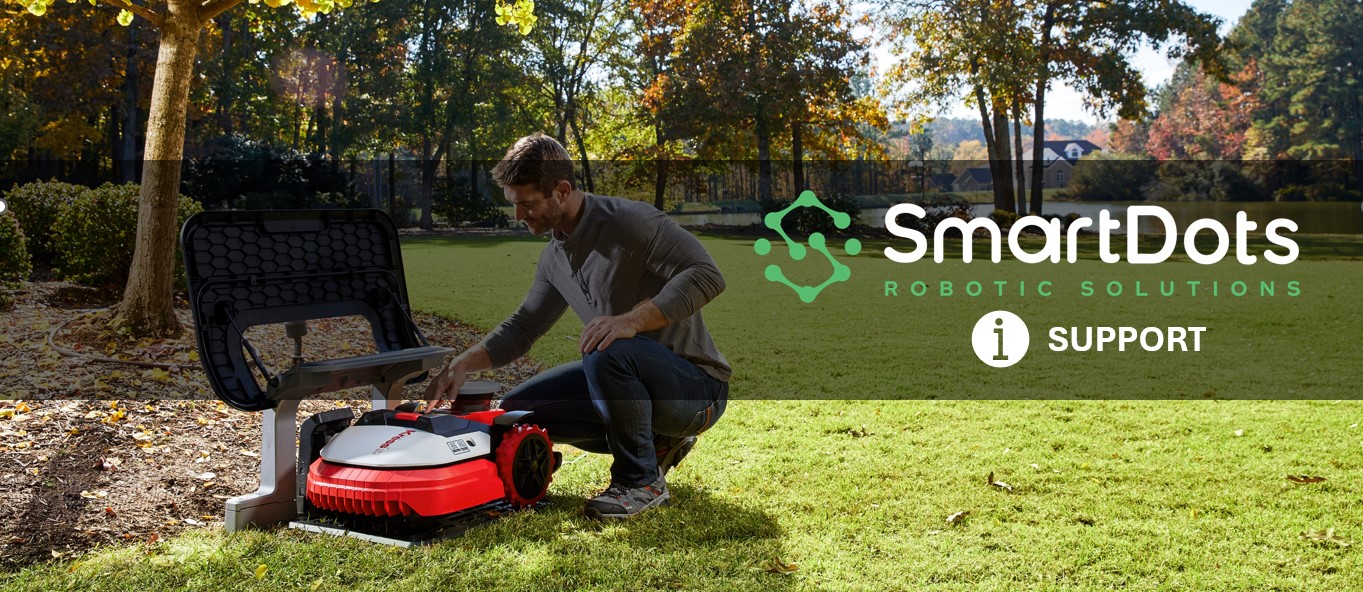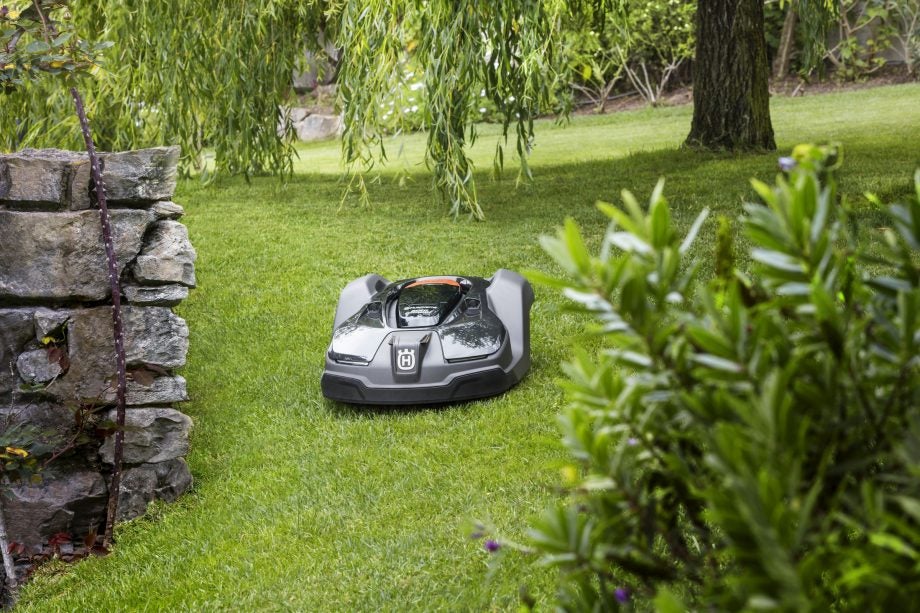
Lawn Maintenance with Robotic Lawn Mower: How to plan a typical year
Introduction
Having a robotic lawn mower installed at your home can bring great excitement as you watch your lawn being mowed autonomously. However, throughout the year, you may observe varying results regarding the quality of your grass. This article provides detailed tips on maintaining and managing your robotic mower from the start of the mowing season until late fall when most lawns go dormant. While these guidelines are general and apply to most grass types and climate zones, users should consider specific factors such as grass type, climatic conditions, and mower model.

March to May - Spring
Initial Setup and Maintenance
As the mowing season begins, it is essential to ensure that your mower is fully functional. It is recommended to have an annual service performed by SmartDots during winter. This service includes a thorough check of every sensor and functional aspect of the mower to ensure smooth operation for the upcoming season.
Blades
After confirming that the mower is in good physical condition, replace the blades. Always start the season with new blades to ensure optimal performance.
Cutting Height
Most summer grasses remain dormant until mid-March to early April. During this period, it is advisable to cut the grass low to remove dead grass and promote new growth. Generally, we do not recommend lowering the cutting height below 1 inch.
Do not start mowing the grass at a low cutting height immediately. Gradually lower the cutting height week by week, no more than two steps at a time (ideally one step at a time). Husqvarna Automowers offer a "Target Height" feature, allowing the mower to adjust the cutting height automatically. Ensure you start from the highest cutting height. If this feature is unavailable, it may be due to an older firmware version on your mower.
Fertilizing and Weed Control
With a robotic mower, fertilizing and weed control are typically only necessary during spring. Since the mower does not operate in winter, natural fertilization from grass clippings does not occur for several months. Spring is also a prime time for weed growth due to pollination. Apply a round of fertilization and weed control before the beginning of May, while the mower gradually trims the grass.
Blade Change
We recommend changing the blades every 4-6 weeks, depending on usage and blade type. If using Endurance blades, consider changing them in mid to late April and again at the start of summer.
Watering
Ensure your lawn receives adequate water, especially to absorb nutrients from fertilizers and stimulate grass growth. Avoid overwatering. Using a Smart Sprinkler Controller can help manage watering schedules effectively.
Mowing Schedule and Time
The mowing schedule depends on your lawn size and mower model. A mower rated for 1 acre should run for 24 hours continuously to achieve 100% coverage (practically 80-90% for complex lawns). For a 1-acre lawn, running the mower for 12 hours a day should fully mow the lawn in 2.5-3 days. Schedule mowing during cooler temperatures or just before watering to reduce stress on the grass.
June to August - Summer
Blade Change
Replace the blades before peak summer, typically in late May to early June. Sharp blades are crucial during this period due to rapid grass growth. Plan a second blade change in late June to mid-July and another in late August or early September.
Cutting Height
Gradually raise the cutting height starting mid-May to maintain taller grass by peak summer. Taller grass helps with moisture retention and reduces the risk of dry soil and burnt grass. Use the "Target Height" feature on Husqvarna Automowers to manage this automatically.
Fertilizing and Weed Control
Fertilizing and weed control are generally unnecessary during summer as the robotic mower naturally fertilizes the lawn with tiny clippings, aiding moisture retention.
Watering
Water the lawn thoroughly in early morning to prevent rapid evaporation and allow the grass to absorb water and nutrients. Avoid watering in the midday or late evening to minimize disease risk.
Mowing Schedule and Time
Maintain a similar mowing schedule to spring, but avoid mowing during extremely hot periods (e.g., 12 pm to 5 pm) to protect both the grass and the mower's battery life and mechanical components.
September to October - Fall
Blade Change
Replace the blades before early to mid-fall, typically in late August to early September.
Cutting Height
Gradually reduce the cutting height as temperatures fall. Make two-step changes: from a height of 8 or 9 to 6 or 7 in September, and from 6 or 7 to 3 or 4 in October/November.
Fertilizing and Weed Control
While generally unnecessary during fall, consider applying a pre-emergent treatment in late fall/early winter (Oct-Nov).
Watering
Reduce watering gradually during fall, using a smart controller to manage this transition.
Mowing Schedule and Time
As grass growth slows, reduce mowing duration. Use the "Weather Timer" feature on Husqvarna Automowers, which parks the mower if the blades detect no grass resistance. Adjust sensitivity settings from "Low" in September to "Medium" in October/November.
November to February - Winter
For lawns with dormant grass in winter, mowing is not required. For winter grass, follow a spring-like approach. This is an ideal time for servicing your robotic mower in preparation for the next season. SmartDots offers comprehensive annual service, covering:
- Thorough mower cleanup to remove debris and dead grass clippings.
- Full service of the cutting assembly, including cleaning, greasing, and replacing damaged parts.
- Blade replacement.
- Polishing of charging contacts and base.
- Charging station inspection and testing.
- Replacement of weather seals and inspection for moisture damage.
- Firmware updates and sensor calibration.
- Front and rear wheel inspection.
This service ensures your mower is ready for the upcoming mowing season, providing hassle-free operation.
Conclusion
These guidelines may need adjustment based on location, seasonal differences, grass type, and personal factors. The aim is to help users optimize their Automower for a perfect and healthy lawn. For any questions or concerns, please contact us at support@smart-dots.com.